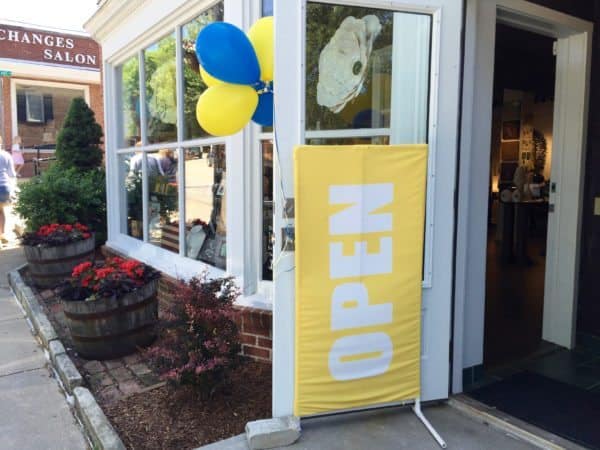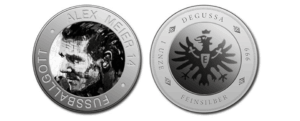
Crowdfunding introduces a new dynamic to the classic retail business. Consumers have direct access to early stage products, can give valuable feedback and create through their own marketing power the viral reach to new mass market products. Large corporations, such as Sony with their platform, have used the mechanism of Crowdfunding to introduce new gadgets and research the behavior of customers.
 The consumers become PROSUMERS – proactive consumers who take an interest in the products that they buy – and PRESUMERS – consumers who finance products in early stages. Retail becomes PRETAIL – pre-selling products ahead of time.
The consumers become PROSUMERS – proactive consumers who take an interest in the products that they buy – and PRESUMERS – consumers who finance products in early stages. Retail becomes PRETAIL – pre-selling products ahead of time.
A good example of this phenomena is as to how Pretail can work in practice is Degussa-crowdfunding.de. Degussa is a Frankfurt-based, world leading trader of precious metals, minted coins and producer of individualized non-circulation and circulation coinage products. To reach out to new customers, the Crowdfunding platform for individual products was launched. Any user can start an idea for a new coin, medal or product.
 A dedicated team at Degussa will screen the submissions and calculate the costs of production for each submission. Then it is up to the crowd to decide whether the coin will be produced – by buying it. Only if enough people pre-purchase the coin, Degussa will start to manufacture them. So basically there are no pre-manufacturing costs for the company. The information on platform exactly describes what users will receive.
A dedicated team at Degussa will screen the submissions and calculate the costs of production for each submission. Then it is up to the crowd to decide whether the coin will be produced – by buying it. Only if enough people pre-purchase the coin, Degussa will start to manufacture them. So basically there are no pre-manufacturing costs for the company. The information on platform exactly describes what users will receive.
Two functionalities are worth mentioning: Firstly, Degussa can allow a pre-selling discount program. The way this works is very simple: if the crowd connects with a certain number of potential buyers, then a discount will be applied to all buyers. This also includes previous purchases within one ongoing project. This creates an incentive for the crowd to spread the link to the Crowdfunding platform on social media and via e-mail.
Secondly, some of the coin projects can have a dedicated social purpose. A recent example was the Crowdfunding for the “Johanniter” Coin. A percentage of the funding volume was transferred to the Johanniter Unfallhilfe (a non-profit decided to help victims of accidents) as a donation. This creates an incentive for the crowd to turn their purchases also into social causes.
For Degussa, the Crowdfunding platform allows them to understand their customers better:
“What kind of designs do they like? What price would the customers pay? Which payment system do the customers prefer? Where does traffic originate and who are influencers promoting the projects?”
These are all questions which a Crowdfunding campaign can answer.
 There a five thousand crowdfunding platforms globally and many allow the so-called reward-based crowdfunding – exchanging money for products. Some of the bigger platforms, such as Kickstarter and Indiegogo, have enabled the sales of millions of products, mostly tech gadgets. The community on these platforms has driven innovation in a wide range of branches. In fact, there is a good case to be made that Crowdfunding campaigns for Wearables such as Pebble gave Apple a good indicator on how big the market for Wearables can be.
There a five thousand crowdfunding platforms globally and many allow the so-called reward-based crowdfunding – exchanging money for products. Some of the bigger platforms, such as Kickstarter and Indiegogo, have enabled the sales of millions of products, mostly tech gadgets. The community on these platforms has driven innovation in a wide range of branches. In fact, there is a good case to be made that Crowdfunding campaigns for Wearables such as Pebble gave Apple a good indicator on how big the market for Wearables can be.
In order to re-position or establish a brand, using a large commercial Crowdfunding platform (such as Indiegogo or Kickstarter) has its advantages and disadvantage. The advantage is to profit from the reputation, services and community of the platform. The disadvantage is that the brand shares the attention space with a platform – if a brand wants to control the message and the communication with the crowd, then incorporating the Crowdfunding mechanism on its own website can be the right strategy.
A good example of such a campaign is the “Fairphone” crowdfunding campaign. Fairphone is a sustainable smartphone built in Amsterdam. Its vision is to create a smart-phone which uses materials from sources where workers are treated fairly and be produced in factories where workers are paid well. The Fairphone was pre-sold on the website of the company. Unlike other campaigns, which highlight a certain amount of money received from the crowd, the campaign highlighted how many Fairphones were sold in total, thus focusing the campaign on the product and not on the total volume.
The Fairphone campaign highlights the need of using the crowdfunding as a digital package. Normally, a package in classical retail has a number of functions. It displays the brand and associates a product with a certain image of a brand – otherwise many products would be indistinguishable. It transports qualities of the product, since the packaging has to convey a sense of taste, luxury, durability or whatever the product wants to highlight. But finally, packaging in retail serves as a bookmark in our memory which associates a certain shopping experience with a product.
Crowdfunding can take over these three functions. In eCommerce, products become more indistinguishable and we don’t remember shopping experiences – we don’t know if we bought something on Amazon or EBay or another platform. But we do remember Crowdfunding campaigns –because they became part of our online reputation. We share the campaign on our social media profiles, ask friends and family to share our support, we are happy when we finally receive the product. The Fairphone campaign even incorporated this into the package design: “Open, it’s yours!” – it says when you receive the packaging.
All of this was only possible because the Crowdfunding campaign was part of the digital strategy of the company, part of the core identity of the campaign as well. This does not mean, however, that only startups can use these campaigns. Corporations can learn a lot from these campaigns – they can learn how to interact with customers at an early stage, practice storytelling and invigorate social media campaigns. Especially in the retail sector, we will see that it makes sense to create a Crowdfunding campaign in order to market a product. The power of brands will push these mechanisms even further.
 Karsten Wenzlaff is a leading German crowdfunding expert. He is currently completing his Ph.D. Thesis at the University of Hamburg in the area of Corporate Crowdfunding while supporting the Berlin-based company TABLEOFVISIONS in developing new corporate crowdfunding platforms.
Karsten Wenzlaff is a leading German crowdfunding expert. He is currently completing his Ph.D. Thesis at the University of Hamburg in the area of Corporate Crowdfunding while supporting the Berlin-based company TABLEOFVISIONS in developing new corporate crowdfunding platforms. David Heberling is the founder of TABLEOFVISIONS. He is a pioneer in crowdfunding having created the first German reward-based crowdfunding platform PLING. His company has worked with a number of large corporations and banks, but also with large international NGOs, such as the Wikimedia Foundation.
David Heberling is the founder of TABLEOFVISIONS. He is a pioneer in crowdfunding having created the first German reward-based crowdfunding platform PLING. His company has worked with a number of large corporations and banks, but also with large international NGOs, such as the Wikimedia Foundation.
